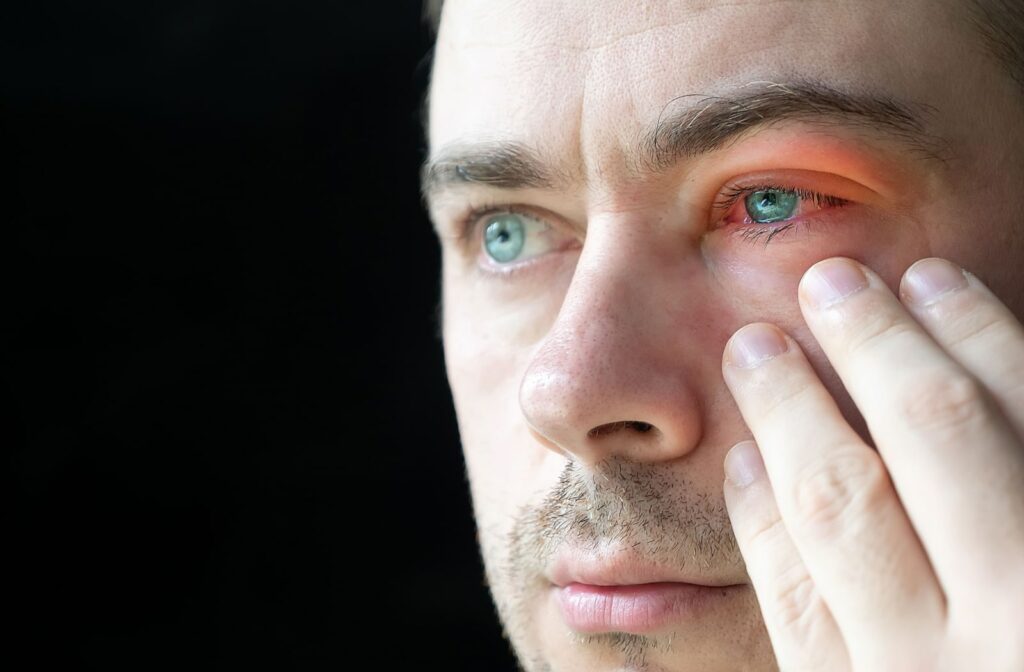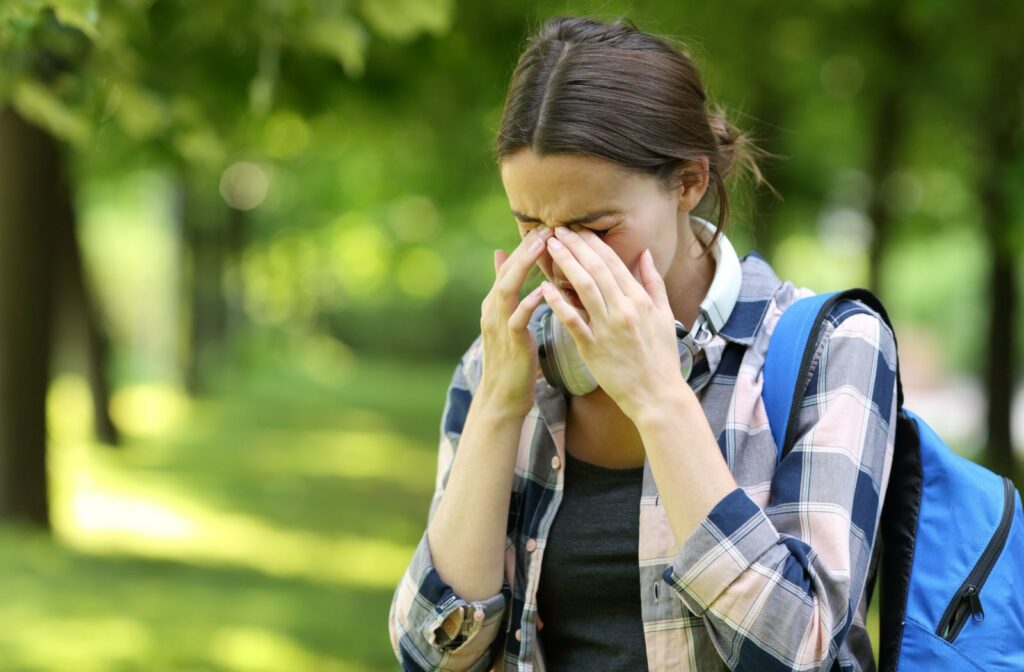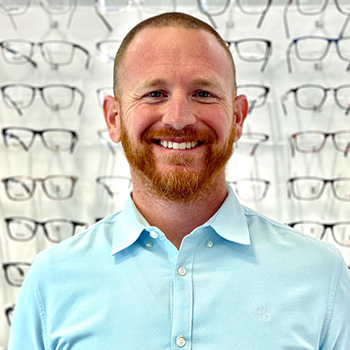Dry eye disease is an irritating condition resulting from dysfunction in your tear film. It can negatively affect your vision, make it difficult to wear contact lenses, and significantly impact your life.
If your optometrist diagnoses you with dry eye disease, their diagnosis will fall into two types: aqueous dry eye and evaporative dry eye (Meibomian gland dysfunction).
What Is Dry Eye?
When your tears can’t properly lubricate your eyes, it can result in symptoms of dry eye disease. Whether caused by decreased tear production or increased tear evaporation, your eyes will feel stripped of hydration, causing discomfort.
Symptoms of Dry Eye
You can identify dry eye disease and problems in your tear film when you experience specific symptoms, such as:
- Feeling like there’s a foreign object in your eye
- Gritty sensation
- Light sensitivity
- Mucus discharge
- Overwatering of the eyes
- Blurred vision
- Discomfort when wearing contact lenses
- Eye fatigue
What is the Tear Film?
The tear film has 3 layers, and problems with any of them can cause symptoms of dry eye on a scale of severity.
- Top oil layer: the top layer of the tear mixture consists of oil that helps smooth the tear surface and slow tear evaporation
- Middle water layer: the thickest layer of the tear mixture, the middle layer is composed of water and salt that help wash away irritants and particles, such as dust or debris
- Inner mucus layer: the inner layer of the mixture is made of mucus that helps evenly spread the tears over the eyes
Types of Dry Eye
Dysfunction in any layer of the tear film can disrupt the balance of your tears and lead to dry eye symptoms. Dry eye can be classified into two types.
Aqueous Dry Eye
When your lacrimal gland, in the corner of your eye, has difficulty producing enough tears, it can contribute to dry eye. The lacrimal gland makes the second, watery layer of your tear mixture which helps wash away debris and irritants from the eyes.
This type of dry eye can result from aging, or autoimmune conditions such as Sjogren’s syndrome, rheumatoid arthritis, and lupus, as they can damage the lacrimal glands. Hormone changes, such as during menopause, can be a risk factor for this type of dry eye disease.

Evaporative Dry Eye or Meibomian Gland Dysfunction (MGD)
Evaporative dry eye results from meibomian gland dysfunction, which occurs in over 85% of dry eye disease cases. This type of dry eye affects the tear mixture’s top oil layer. Oil produced by the Meibomian gland helps slow evaporation and stabilize the balance of tears.
When the glands are blocked or damaged from debris in the eyelids, computer and screen usage, or makeup buildup, dry eye symptoms can emerge. It’s common in those with eyelid inflammation, called blepharitis, or skin conditions such as rosacea.
Other Causes of Dry Eye
Additional factors can also contribute to dry eye disease, including:
- The environment, including wind, smoke, pollution
- Medications including birth control, some antidepressants, Accutane, hormone replacement therapy
- Refractive eye surgeries, such as LASIK
Treatments for Dry Eye Disease
With advancing technology, treatment options now extend far beyond using artificial tears. Modern treatments target the cause of your dry eye rather than simply managing the symptoms.
In-Office Dry Eye Treatments
Several treatment options at our clinic can help restore your well-being and ease your dry eye difficulties.
- OptiLight by Lumenis is the only FDA-approved intense pulsed light (IPL) treatment. In 3 to 4 sessions over 75 days, non-invasive, carefully calibrated light energy pulses will help liquefy and free hardened oils that may be blocking your eye glands.
- LipiFlow therapy uses a uniquely designed device that covers your eyes and gently warms and melts blockages in your eye glands, then gently massages debris from your eyelids.
- Oasis punctal plugs prevent tears from draining out of your eye too quickly by inserting tiny plugs into your tear ducts. They’re a safe dry eye management system.
- TearCare is a heat therapy system that treats evaporative dry eye disease due to meibomian gland dysfunction (when used with manual expression of the meibomian glands).
At-Home Remedies
Your optometrist can also offer you treatments to help relieve dry eye in the comfort of your own home.
- Omega-3 supplements derived from salmon, halibut, nuts, seeds, and oils can reduce existing symptoms of dry eye and prevent future dry eye symptoms
- Applying a warm compress to your eyelids can help soften oil blockages and soothe irritation or redness.
Find Dry Eye Relief
Whether you have persistent dry eye symptoms or you’re noticing signs of the condition for the first time, book an appointment to get relief for your eyes.


